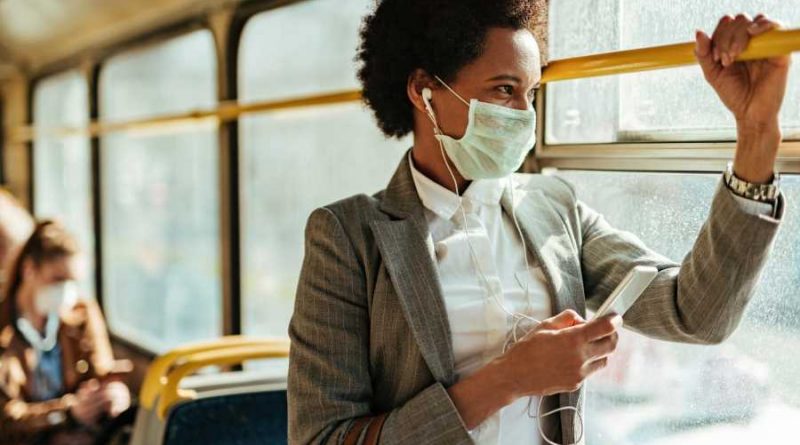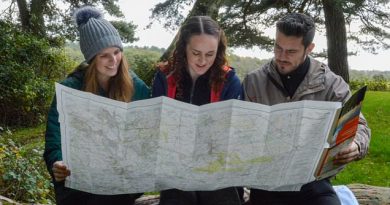What is considered essential travel?
While it might be tempting to take a quick trip to the beach or attend a friend’s birthday party, given the fact that COVID is still a real threat, you’re likely putting yourself and others at risk through non-essential travel.
CDC data currently shows the number of cases is trending down since the recent spike in December, but more cases are still being reported each day. At present, there are more than 28 million confirmed cases in the U.S., with over 500,000 deaths. Those numbers alone paint a grim picture, but there are steps that each of us can take to help decrease the spread, and one of them involves how we travel.
What is essential travel?
Essential travel is traveling for the sake of essential work (i.e., agricultural work), emergencies, medical purposes, government matters, and military matters. If your job requires your services for vital assistance, processes, or products, then your traveling is essential.
Load Error
For domestic travel, the CDC recommends checking the state’s health department website for the location you’re headed to for any restrictions and requirements. If for necessary reasons, you have to leave the U.S., you can visit the U.S. Department of State’s website for international advisories.
Ultimately, if you have to commute because of your work or an emergency, then your travel is considered essential.
What is non-essential travel?
Non-essential travel is commuting for the sake of leisure or recreational purposes. If you’re planning to go on vacation, participate in recreational activities, or casually visit family or friends, this is considered non-essential travel.
Currently, you are free to commute within and outside of the U.S. (restrictions for certain international locations may be in place). Road trips, flights, and train rides are all viable, and you’re free to visit recreational areas like parks and nature reserves.
Just keep in mind that you’ll be responsible for knowing and following any restrictions that are in place at your destination.
What are the current restrictions on non-essential travel?
Since President Biden took office in January, many travel restrictions and policies that the former administration relaxed have been reinstated.
For U.S. citizens, the most significant change is that the CDC will no longer allow exceptions for negative coronavirus tests. Anyone coming into the U.S. from an international destination, citizen or not, must present a negative coronavirus test — no if, ands, or buts.
For non-U.S. citizens, the new restrictions prohibit them from entering the country if they have recently been in the United Kingdom, Ireland, and other parts of Europe, referred to as the Schengen countries. The Schengen area includes 26 countries like Germany, Switzerland and Norway that have minimal border control for those traveling among them. The ban also impacts non-U.S. citizens traveling from Brazil and South Africa.
And still, the CDC discourages non-essential travel to prevent the spread of COVID-19 and requires all passengers who do choose to travel to wear masks on planes, trains, buses and in transportation hubs at all times.
For commuting within the U.S., check for any restrictions with each state below:
See travel updates for each state
- Alabama
- Alaska
- Arizona
- Arkansas
- California
- Colorado
- Connecticut
- Delaware
- Florida
- Georgia
- Hawaii
- Idaho
- Illinois
- Indiana
- Iowa
- Kansas
- Kentucky
- Louisiana
- Maine
- Maryland
- Massachusetts
- Michigan
- Minnesota
- Mississippi
- Missouri
- Montana
- Nebraska
- Nevada
- New Hampshire
- New Jersey
- New Mexico
- New York
- North Carolina
- North Dakota
- Ohio
- Oklahoma
- Oregon
- Pennsylvania
- Rhode Island
- South Carolina
- South Dakota
- Tennessee
- Texas
- Utah
- Vermont
- Virginia
- Washington
- West Virginia
- Wisconsin
- Wyoming
How to travel safely during COVID-19
If you are planning to commute for essential or non-essential purposes, here are some ways you can protect yourself and others, depending on your mode of transportation:
Travel by public transportation
- Wear a mask.
- Try to maintain social distance from other passengers. If possible, skip a seat if taking a bus.
- Wear sunglasses, safety goggles, or glasses to help shield and protect your eyes since you’ll be in close proximity to others.
- Keep hand sanitizer with you and wash your hands when possible.
Travel by personal vehicle
- Try to limit the number of riders as much as possible.
- Increase circulation within your vehicle by opening windows or turning on the air conditioning in non-recirculation mode.
- Keep the vehicle sanitized with disinfectant sprays and wipes. Be sure to sanitize high-touch areas like seats, seat belts, the steering wheel and gear post.
Travel by airplane
- Wear a mask.
- Try to maintain distance from other passengers (if possible).
- Wear sunglasses, safety goggles, or glasses to shield and protect your eyes since you’ll be in a closed space for potentially prolonged periods.
- Keep hand sanitizer with you and wash your hands once you’ve arrived at your destination.
Plus, be sure to read our guide that outlines which airlines are taking the most precautions against COVID-19.
Bottom line
The best advice right now is to stay home.
No matter how alluring that beach trip is or how much fun your friends say you’re going to have, the only way to absolutely protect yourself and your loved one is to stay home. Any non-essential travel increases your risk and others’ for contracting and transmitting COVID-19. But, if you must go, be sure you adhere to the CDC’s health guidelines which include:
- Practicing social distancing by staying at least 6 feet apart from others.
- Wear a face covering.
- Keep your hands clean by washing and sanitizing with at least 60% alcohol.
- Stay at home if you feel sick.
- Avoid contact with others who are sick.
Featured image by Drazen Zigic/Shutterstock.
Chase Sapphire Preferred® Card
Chase Sapphire Preferred® Card
CARD PERKS
- 60,000 bonus points after you spend $4,000 on purchases in the first 3 months from account opening. That’s $750 toward travel when you redeem through Chase Ultimate Rewards®. Plus earn up to $50 in statement credits towards grocery store purchases for use within the first 12 months of account opening.
- $95 annual fee
WHY WE LIKE IT
- Earn 2X points on travel and dining at restaurants & 1 point per $1 spent on all other purchases worldwide
- 1:1 point transfer to leading frequent travel programs at full value (1,000 Chase Ultimate Rewards points equal 1,000 partner miles/points)
- We used points at the Park Hyatt Milan
- Read our review of the Chase Sapphire Preferred
READ MORE
Source: Read Full Article



